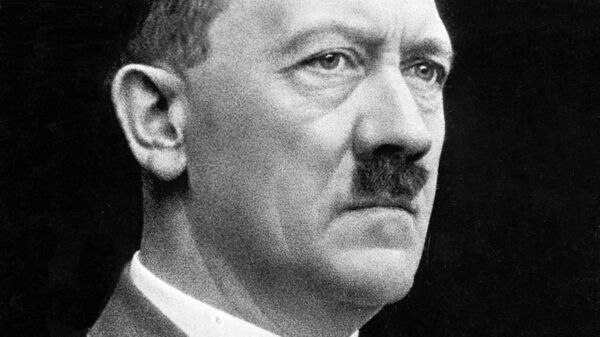As archaeologists swooped in to examine a group of isolated stone buildings in the Argentinian jungle, their discovery breathed fresh life into a World War II myth suggesting that infamous Nazi German leader Adolf Hitler could have successfully fled Germany after the war and disappeared into South America.
The History Channel’s Hunting Hitler series narrated how the team used the expedition to investigate claims that senior Nazis escaped the collapse of the Third Reich to live out their days in the jungle.
Hitler's Fourth Reich plan... EXPOSED.
— HISTORY (@HISTORY) November 6, 2020
Hunting Hitler: The Final Chapter on Wednesday at 8/7c. pic.twitter.com/aSJGGa4qgB
The narrator in “Hunting Hitler: The Final Chapter”, said:
“600 miles north of Buenos Aires, in the remote region of Misiones, Argentina, Tim Kennedy, US Army Special Forces, heads into the dense jungle to follow the lead. CIA veteran Bob Bear has arranged for Philip Kiernan, an expert on German archaeology, to join Tim in the investigation.”
The team was heading to examine a group of solitary buildings in the deserted location which had been shrouded in mystery and local lore.
However, as they met up with the director of the dig – Daniel Schavelzon - the team of archaeologists began unearthing artefacts that suggested this site had served a sinister purpose, “To provide a safe haven for Nazis on the run.”
Previously, Argentinian archaeologist Daniel Schavelzon had been quoted by the Buenos Aires daily Clarín as saying in 2015:
“Apparently, halfway through the Second World War, the Nazi air force devised a secret project of building hideouts so that the highest-ranking Nazis could escape after their defeat – inaccessible sites in the middle of deserts, in the mountains, on a cliff or in the middle of the jungle like this.”
Schavelzon, who finances his digs with contributions from private funders, was quoted by the outlet as saying he believed the ruins he was exploring in Teyú Cuare national park might have been a ‘bolthole’ for fleeing Nazis.
“All the objects from the excavation are from the 20th century. All these cans we found look like they are for sardines, corned beef, milk,” claims the narrative in the documentary.
Then Schavelzon detailed a new discovery, saying:
“This is a box made in 1940, it’s engraved and we found it inside a wall. We were lucky to find it. Inside we have coins.”Exclusive interview:
— IBTimes UK (@IBTimesUK) March 24, 2015
How Daniel Schavelzon stumbled upon Third Reich find of the century http://t.co/nWYpdCcM9N pic.twitter.com/m3u3PF5fMx
Philip Kiernan speculated these could be “Nazi coins from the period of the Third Reich”.
The team proceeded to discover a number of photos inside the box.
“We have a photo of a kid wearing a Nazi uniform, with a swastika on his arm,” says Kennedy, adding:
“This is a photo of Hitler and Mussolini taking a stroll… Without a doubt, this is forensic evidence that there were Nazis here. I want to understand what was going on there.”
Fringe Theories
In truth, the dilapidated buildings of the “Nazi” site had been open to the public for decades. Not far away are the remains of San Ignacio Miní, a Baroque monastery which is a popular tourist attraction.
In an interview with The Guardian, Schavelzon admitted that there was little evidence linking the Teyú Cuaré ruins to a supposed Nazi safe haven.
Parque Teyú Cuare un lugar donde el misterio convive con la historia!!!! pic.twitter.com/gTxtVCMTwE
— Daniel Sussini (@DSussini) August 23, 2017
“There is no documentation, but we found German coins from the war period in the foundations… But does a handful of old German coins provide sufficient proof of a secret Nazi hideaway plan in northern Argentina? That was just speculation on my part… The press picked it up and magnified it,” said Schavelzon.
The three-season television series "Hunting Hitler" was broadcast by the History Channel from 2015 till 2018, based on "speculation about the dictator’s survival".
Fringe theories have abounded contradicting the accepted fact that Adolf Hitler committed suicide in the Führerbunker on 30 April 1945, suggesting that together with his wife, Eva Braun, he survived and escaped from Berlin.
Declassified FBI documents also referenced alleged sightings of Hitler, yet acknowledged that the information within those documents could not be verified.
Nevertheless, Argentina did give refuge to some of the worst Nazi criminals, including Auschwitz doctor Josef Mengele and Adolf Eichmann, as thousands of former SS officers and former Nazi party members were welcomed to the country by then-president Juan Perón.




